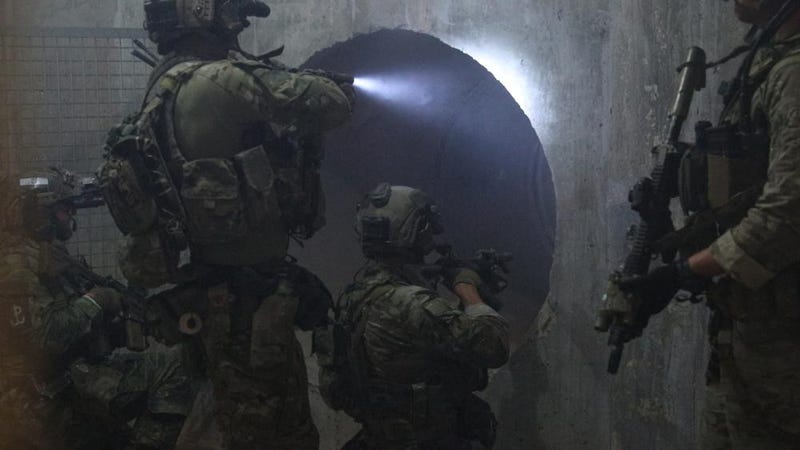
As hard as the U.S. military may have tried, one conflagration after the next occupied their deployment schedules. That was most evident as Special Operations Forces (SOF) were heavily relied on to carry the nation's burden through the Global War on Terror. One failed Pacific pivot later, and SOF is once again focused on deterring nation-state adversaries, while also confronting non-state actors in places like Syria.
A big part of that is deterrence, which involves strengthening partnerships with NATO Special Operations Forces. This summer U.S. Navy SEALs conducted training exercises in Croatia with their maritime SOF unit called Zapovjedništvo specialjalnih snaga or ZSS.

The exercise in and around the city of Split saw SEALs training the younger maritime unit in sub-surface operations, ship seizures, and other tasks. One exercise involved swimming up to a bridge, scaling it with a caving ladder, and taking it by force. In another exercise, ZSS and SEALs recaptured a simulated hijacked vessel at sea.
10th Special Forces Group also plays an important role in strengthening the relationship with NATO SOF. Polish and German SOF were recently hosted by the 10th Group at Fort Carson, Colorado for urban warfare training.
A press release stated that they conducted, "Close-Quarters Combat shoulder to shoulder." It is worth noting that the annual joint training exercise between U.S. and Filipino forces called Balikatan, which translates to shoulder-to-shoulder, ended in April. And the joint American/German/Polish training wrapped in June.
In July, the 10th Group also held a training mission to exercise the unit's unconventional warfare capability, a skill set that many feared would atrophy during the War on Terror as Green Berets focused on Foreign Internal Defense and Direct Action missions.
“Raising your signature on the spectrum or if the enemy knows you’re there or not can greatly impact your mission and what you can accomplish; sometimes it’s life or death," a Special Forces Team Leader said after the exercise, commenting on how his team has to blend in with the local population while conducting unconventional warfare. “The ability to wear multiple levels of camouflage – from polo shirt to full assault rig – is necessary for certain missions,” the Team Sergeant added.
Lots of new buzzwords have been added to the national security lexicon in recent years, terms like "gray zone conflict" and "near-peer adversary" but really it is just a return to nation-state conflict being conducted just below the nuclear threshold as was seen during the Cold War.
At a stalemate in places like Berlin, Soviet and American espionage and unconventional warfare shifted to the so-called third world as the superpowers competed for influence in Central America, Africa, and Central Asia.
As history marches deeper into the 21st Century, there are as many differences as similarities with the past. Today's Cold War moves at a much faster pace, in a multi-polar world with many empowered national and non-state actors. Special Operations Forces are unlikely to face any major budget cuts in the foreseeable future as policymakers appear poised to continue to rely on their light footprint presence and force-multiplying abilities on future battlefields.
Want to get more connected to the stories and resources Connecting Vets has to offer? Click here to sign up for our weekly newsletter. Reach Jack Murphy: jack@connectingvets.com or @JackMurphyRGR.



